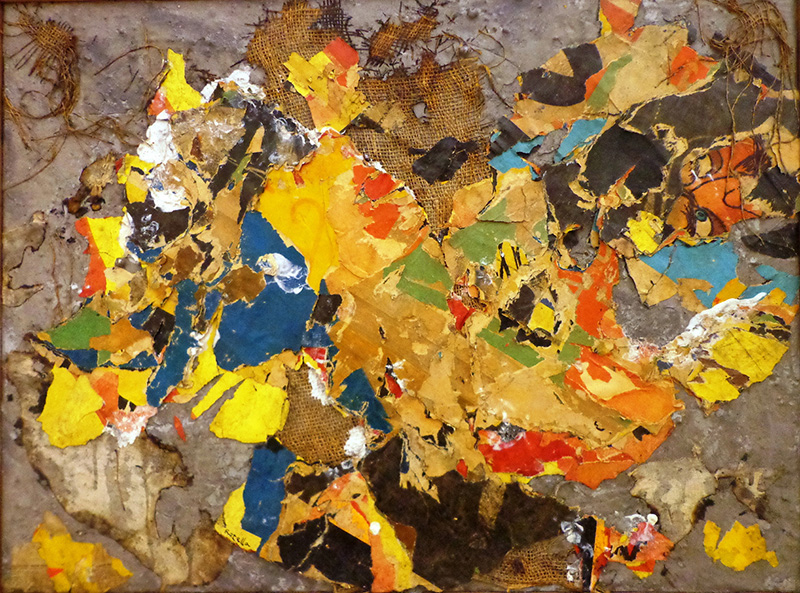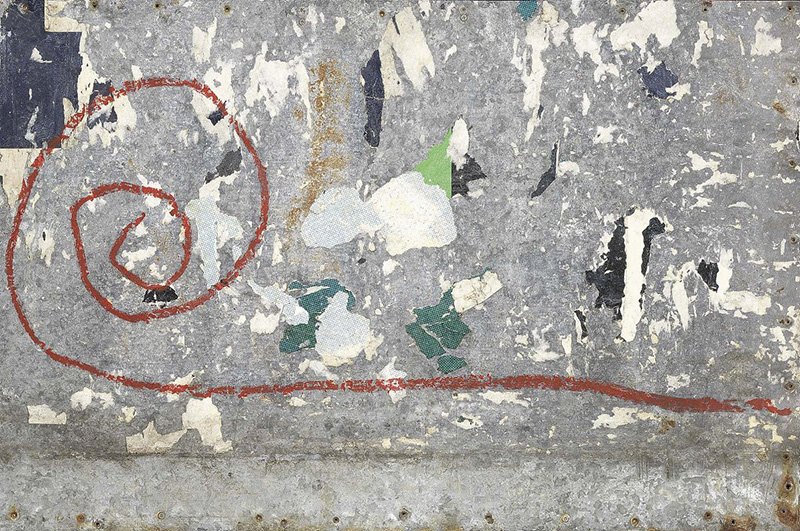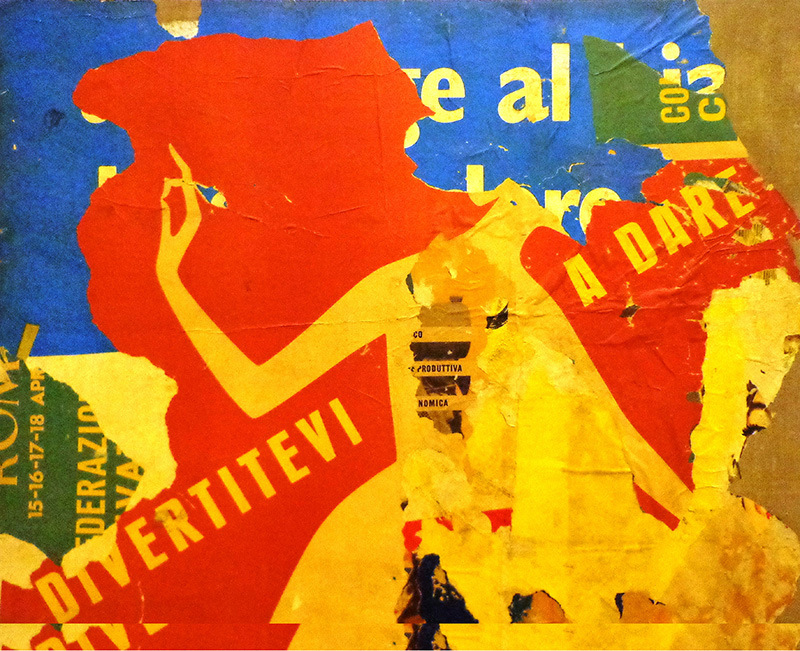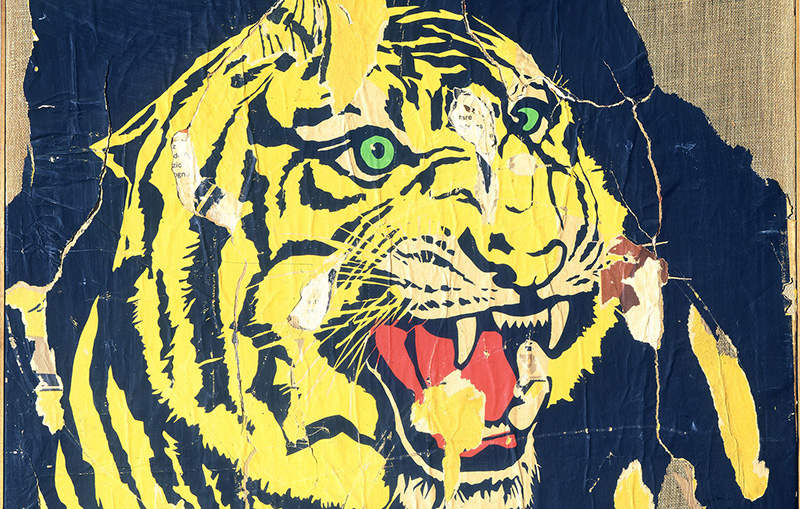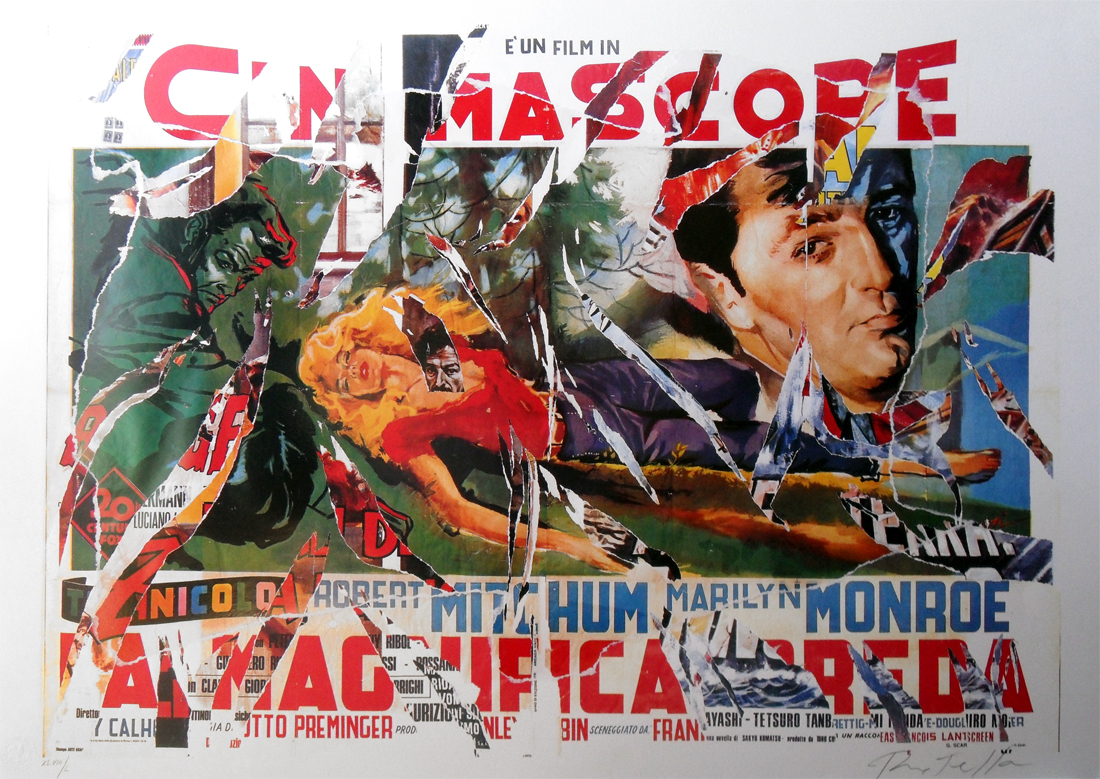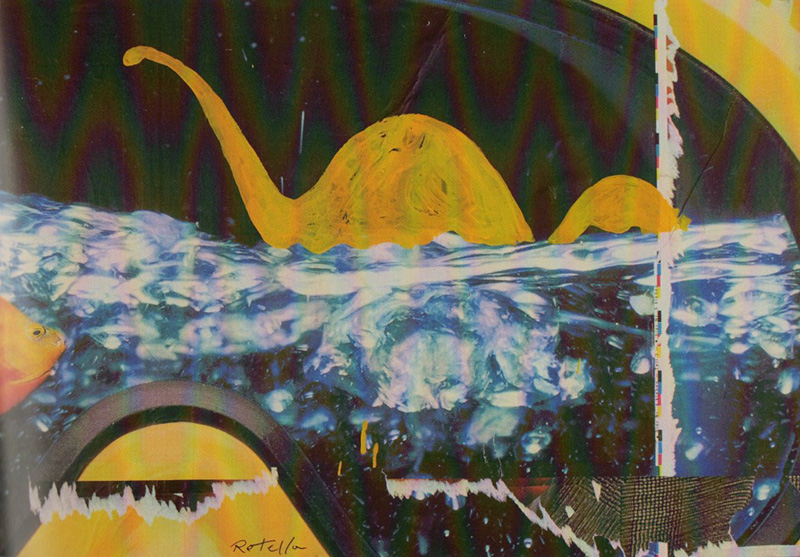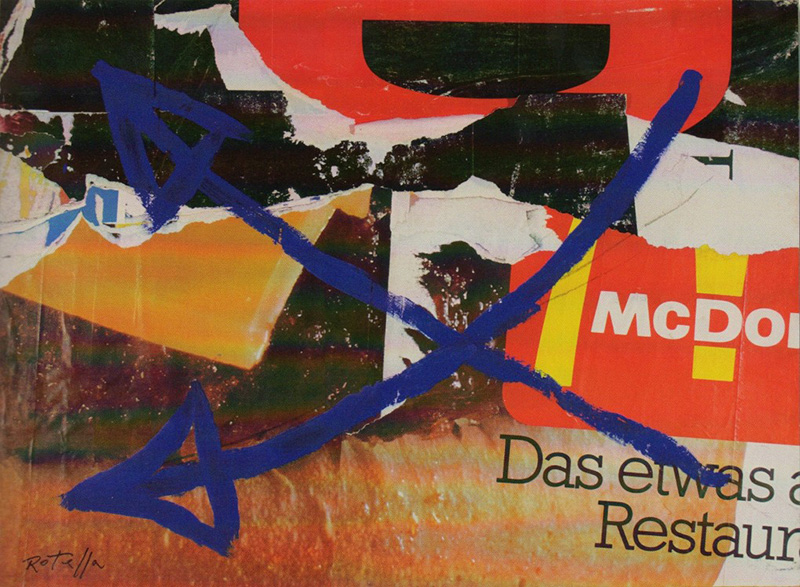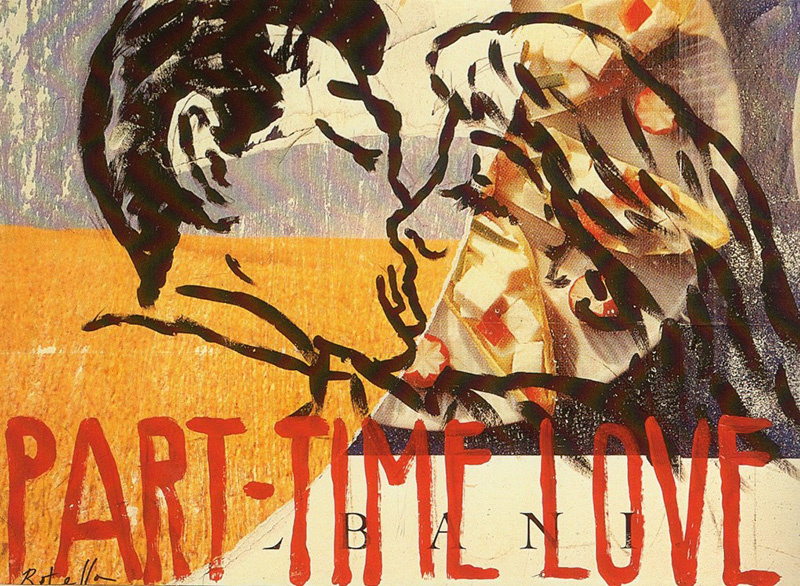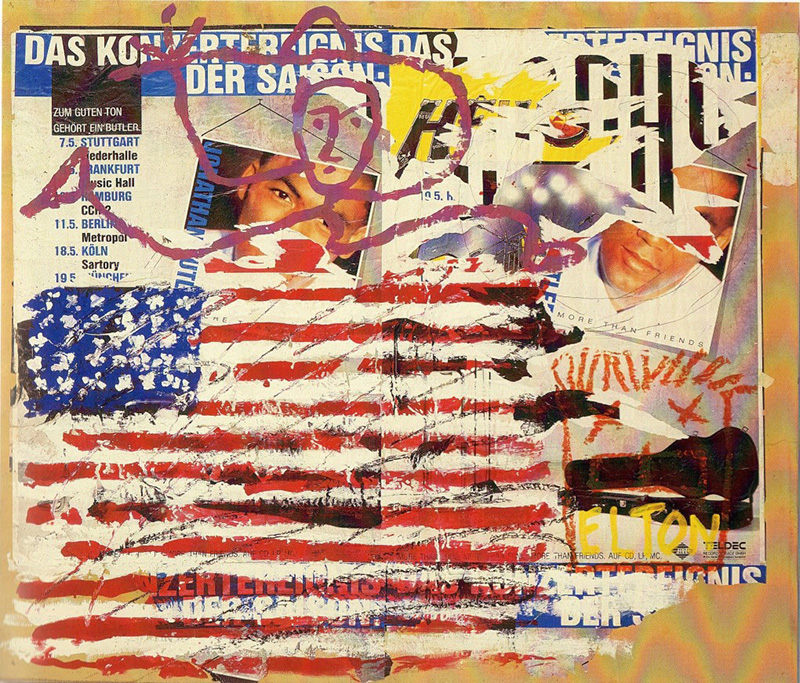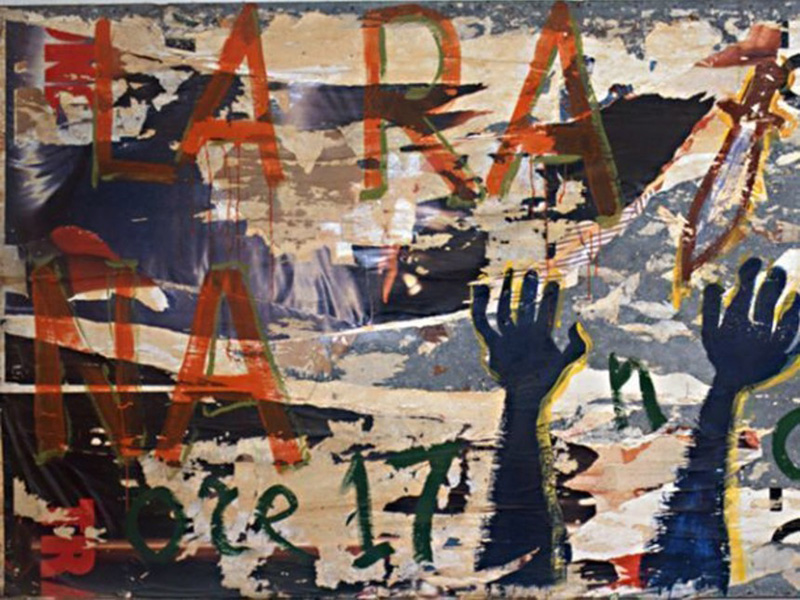TRACES: Mimmo Rotella
 Today is the occasion to bear in mind Mimmo Rotella (7/10/1918-8/1/2006), inspired from the ripped posters that lined the walls of Rome, Mimmo Rotella became a key figure in the development of Décollage, a technique which involves removing or tearing pieces of an existing image, rather than building up an image in the manner of conventional collage.This column is a tribute to artists, living or dead, who have left their mark in Contemporary Art. Through documents or interviews, starting with: moments and memories, we reveal out from the past-unknown sides of big personalities, who left their indelible traces in time and history…
Today is the occasion to bear in mind Mimmo Rotella (7/10/1918-8/1/2006), inspired from the ripped posters that lined the walls of Rome, Mimmo Rotella became a key figure in the development of Décollage, a technique which involves removing or tearing pieces of an existing image, rather than building up an image in the manner of conventional collage.This column is a tribute to artists, living or dead, who have left their mark in Contemporary Art. Through documents or interviews, starting with: moments and memories, we reveal out from the past-unknown sides of big personalities, who left their indelible traces in time and history…
By Dimitris Lempesis
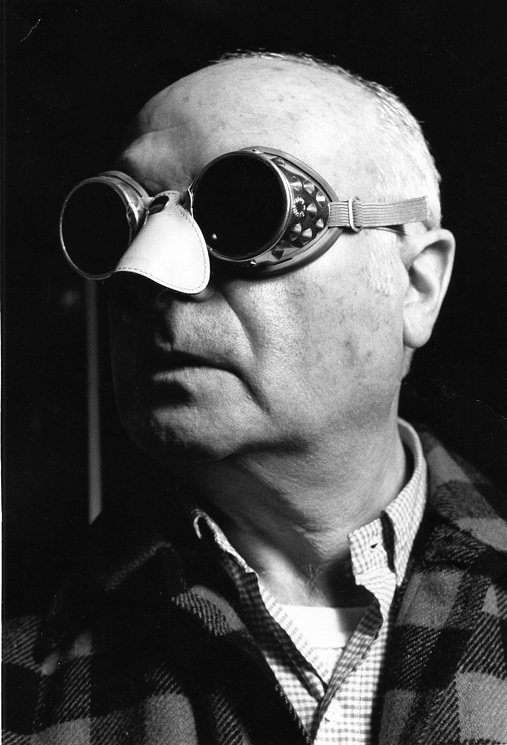 Following high school Mimmo Rotella moved to Naples where he began art studies in l’Accademia di Belle Arti. In 1945 he moved to Rome: following his figurative beginnings and first experimentations he elaborated a manner of pictorial expression of neo-geometrical matrix. His participation in exhibitions began in 1947 at the Mostra Sindacale di Arti Figurative. His first solo exhibition, with abstract-geometrical works, was held in 1951 at the Galleria Chiurazzi in Rome. In 1951 he had his first contact with French artists, exhibiting in Paris at the “Salon des Realistes Nouvelles”. For the period bridging 1951-52 he obtained a scholarship on the part of the Fullbright Foundation, and he was able to travel in the United States at the University of Kansas City with the appointment as Artist in Residence. Here he created a large mural composition and recorded phonetic poems with the accompaniment of percussion instruments. Following his return to Rome in 1953 and convinced that everything in art had already been done he improvised what he himself has defined as “Zen illumination”, the discovery of the advertising poster as artistic expression and the message of the city. He carried out the so-called “Double Décollage”, the poster firstly removed from the wall and then torn up in the studio. In this period he also made use of the retros d’affiche, using the verso of the posters with the result obtained of non-figurative and monochrome works. In 1958 he was visited in Rome by the French critic Pierre Restany. In the same year he was included in the Roman exhibition entitled “Nuove tendenze dell’arte italiana”. In 1959 one of his works was reproduced in the review “Azimuth”, founded in Milan by Enrico Castellani and Piero Manzoni. In 1960 he joined the Nouveau Réalisme group (although he did not sign its manifesto). The theoretician of this movement was Pierre Restany and included – amongst others: Yves Klein, Jean Tinguely, Daniel Spoerri, Arman and Christo. By working in the most total isolation Rotella had anticipated the path of his French colleagues who were only exhibited for the first time in 1957 at the Galerie Colette Allendy in Paris. American Pop Art and Abstract Expressionism, together with the Informal and the spatial and matteric research works carried out in Italy at the time by Lucio Fontana and Alberto Burri played an important role in directing Rotella’s pictorial orientation. In 1960 he met Willem de Kooning and Mark Rothko in Rome. Using typographical products, between 1967 and 1973 he created his “Art-typo” works, printing proofs freely chosen and reproduced on canvas. The “Plastiforme” were created in 1975: ripped posters placed on a polyurethane support with the intention of giving them 3 dimentions. In 1986 he visited Cuba, and created his “sovrapitture”, inspired by the up-to-date theme of graffiti, pictorially intervening on the advertising posters that were torn and then glued on canvas (and from 1987 also ripped posters glued on a support of sheet metal). He drew anonymous writings, like the ones it is possible to read on city walls: signs, love notes and political slogans/epithets in a double message. In 1990 he took part in the “Art et Pub” exhibition held at the Centre Pompidou in Paris and in the “High and Low” exhibition held in New York at the Museum of Modern Art. In 1997 Rotella dedicated the cycle of works entitled “Felliniana” to the films by Federico Fellini.
Following high school Mimmo Rotella moved to Naples where he began art studies in l’Accademia di Belle Arti. In 1945 he moved to Rome: following his figurative beginnings and first experimentations he elaborated a manner of pictorial expression of neo-geometrical matrix. His participation in exhibitions began in 1947 at the Mostra Sindacale di Arti Figurative. His first solo exhibition, with abstract-geometrical works, was held in 1951 at the Galleria Chiurazzi in Rome. In 1951 he had his first contact with French artists, exhibiting in Paris at the “Salon des Realistes Nouvelles”. For the period bridging 1951-52 he obtained a scholarship on the part of the Fullbright Foundation, and he was able to travel in the United States at the University of Kansas City with the appointment as Artist in Residence. Here he created a large mural composition and recorded phonetic poems with the accompaniment of percussion instruments. Following his return to Rome in 1953 and convinced that everything in art had already been done he improvised what he himself has defined as “Zen illumination”, the discovery of the advertising poster as artistic expression and the message of the city. He carried out the so-called “Double Décollage”, the poster firstly removed from the wall and then torn up in the studio. In this period he also made use of the retros d’affiche, using the verso of the posters with the result obtained of non-figurative and monochrome works. In 1958 he was visited in Rome by the French critic Pierre Restany. In the same year he was included in the Roman exhibition entitled “Nuove tendenze dell’arte italiana”. In 1959 one of his works was reproduced in the review “Azimuth”, founded in Milan by Enrico Castellani and Piero Manzoni. In 1960 he joined the Nouveau Réalisme group (although he did not sign its manifesto). The theoretician of this movement was Pierre Restany and included – amongst others: Yves Klein, Jean Tinguely, Daniel Spoerri, Arman and Christo. By working in the most total isolation Rotella had anticipated the path of his French colleagues who were only exhibited for the first time in 1957 at the Galerie Colette Allendy in Paris. American Pop Art and Abstract Expressionism, together with the Informal and the spatial and matteric research works carried out in Italy at the time by Lucio Fontana and Alberto Burri played an important role in directing Rotella’s pictorial orientation. In 1960 he met Willem de Kooning and Mark Rothko in Rome. Using typographical products, between 1967 and 1973 he created his “Art-typo” works, printing proofs freely chosen and reproduced on canvas. The “Plastiforme” were created in 1975: ripped posters placed on a polyurethane support with the intention of giving them 3 dimentions. In 1986 he visited Cuba, and created his “sovrapitture”, inspired by the up-to-date theme of graffiti, pictorially intervening on the advertising posters that were torn and then glued on canvas (and from 1987 also ripped posters glued on a support of sheet metal). He drew anonymous writings, like the ones it is possible to read on city walls: signs, love notes and political slogans/epithets in a double message. In 1990 he took part in the “Art et Pub” exhibition held at the Centre Pompidou in Paris and in the “High and Low” exhibition held in New York at the Museum of Modern Art. In 1997 Rotella dedicated the cycle of works entitled “Felliniana” to the films by Federico Fellini.

